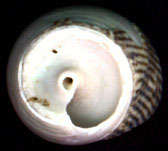People talk about being “out of it”. The phrase hints at real out-of-body experiences. I had my first around the age of fourteen, when I floated through the bottom of my bed and encountered a coffin-sized amber crystal, which I immediately recognised as me. I had a number of subsequent experiences, including trying (successfully) to pass through walls, see myself in a mirror while disembodied (unsuccessful), and one experience where I watched my brother’s dreams appeared like a cloud of images around his head. Around 10% of the population have out-of-body episodes, including near-death experiences. I was recently interviewed for a qualitative study on the subject.
out-of-body experiences
There are a few current theories about out-of-body experiences. Psychologist Susan Blackmore maintains that we can temporarily deconstruct the sense of self to reconstruct it at a personal location outside—rather than within—the personal image of the body. This “extreme depersonalisation” can be triggered by intolerable experiences—we simply remove ourselves from the physical reality of the unbearable. I favour other more recent research in consciousness studies (such as that conducted by anaesthesiologist Stuart Hameroff and mathematician Roger Penrose) that suggests the mind may be produced by quantum processes that use the sub-atomic structures within brain cells, a theory that allows for the possibility of consciousness existing both inside and beyond the physical brain. Philosopher David Chalmers even hints at a theory revisited after years in the wilderness—that the mind could be a separate entity in its own right. The Horizon Research Foundation set up a study across 25 hospitals to explore near-death phenomena and the Nour Foundation is continuing that research with The AWARE Study (now complete) and the The Human Consciousness Project. Although they feel very real, I'm uncertain whether out-of-body experiences are evidence of life beyond physical existence or a product of physical processes. Maybe both are true.
Occurrences have now stopped. The last—around 1997—was triggered during extreme anxiety. Usually, they were pleasant and exhilarating, and often occur at the borders of sleeping and waking. There is no break in consciousness between exiting the body and returning to it, and I remained acutely aware throughout.
Alice In Wonderland Syndrome
For a related experience (I used to call it “small seeing” as a child). It was as if I became incredibly large, or felt the room getting smaller. I found it fascinating. I was taken to a doctor who said there was nothing wrong with my eyes. Apparently, I found out later that something neurological was actually happening and it has a great name: Alice In Wonderland Syndrome (here’s a related article about illustrator Johanna Basford who also experienced this—I originally linked to her blog, but that link’s gone). It tends to start around age 5 and stop in early adolescence, which was my experience. I liked the sense of unreality and removal from the everyday.
